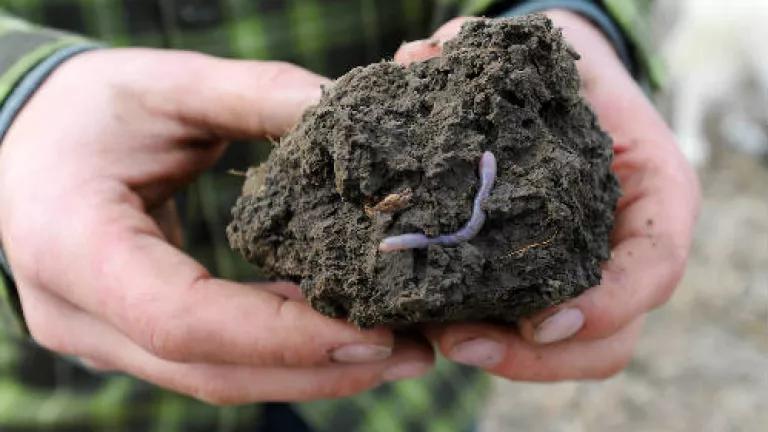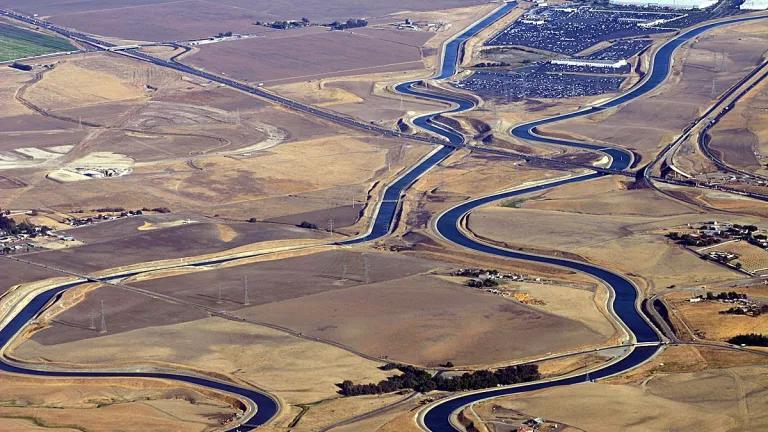This past Friday, NRDC and our partners at Rainforest Alliance, Food Alliance and Friends of the Earth U.S. submitted joint comments to the Global Roundtable on Sustainable Beef (GRSB) detailing why the latest version of their “Principles” and “Criteria” falls short of serving as a credible framework for recognizing sources of verified sustainable beef.
We offered recommendations on how the GRSB can better translate the “menu” of proven ranch and farm management solutions into effective yet practical criteria for recognizing credibly less impactful sources of beef. That is, those that can be trusted to come from ranches, farms, feedlots and feed crop operations that maintain the health of ecosystems and their biodiversity, prevent and minimize pollution, and protect public health, animal welfare and the well-being of farm workers.
Climate Change: GRSB’s criterion for minimizing the massive carbon footprint of beef production ignores strategies for reducing methane emissions (now estimated to have 34 times the global warming potential of CO2[1]). After all, burps and farts of cattle and other ruminants (enteric fermentation) are the single largest source of methane emissions in the U.S. (24.9% of the total according to the EPA’s 2014 greenhouse gas inventory). Manure management is fifth (9.4%). GRSB also fails to mention opportunities to reduce nitrous oxide (310 times the global warming potential of CO2) from feed crop production and manure management.
Land Conversion: We applaud the GRSB’s acceptance that deforestation from cattle expansion must be “minimized and eventually eliminated”. Yet it seems easy for producers to say they are in compliance because they will “eventually” stop cutting forests to create pasture. Why not set a target date for eliminating land conversion driven by cattle expansion, such as within five years?
Deforestation is, of course, not the only type of land conversion associated with beef production.[2] Here in the U.S., 23.6 million acres of grasslands, wetlands and shrublands were converted to row crops (particularly corn—much of that ending up as feed for farm animals)—between between 2008 and 2011 alone[3]. This conversion is destroying our precious grassland heritage and releasing large amounts of carbon from the soil (where it is beneficial) into the atmosphere (where it accelerates climate change). For this reason, we believe this criterion should encompass all types of land conversion related to beef production.
Fresh Water Conservation: The GRSB falls short on fresh water conservation in several ways:
- What about groundwater? Numerous scientific studies have found that poor manure management can cause both surface and groundwater pollution, including of expensive-to-replace drinking water supplies.
- Water quality AND quantity. The criterion does not address fresh water depletion in water scarce regions. We recommended an additional criterion to cover water quantity.
- Toxic pollution in our waterways. The Fresh Water criterion does not address impacts of toxic pollutants from feedlots or processing facilities, where residues of antibiotics, hormones, heavy metals, pesticides, and pathogens in manure, not to mention dead-zone forming nutrient pollutants, are too often discharged into waterways.
Soil Health and High Conservation Value Habitats: Healthy soils are the foundation of healthy ranches and farms. They support forage plant growth, absorb and store water, and help counteract climate change by trapping carbon below ground. Thus when well-cared for, healthy soils buffer ranches and farms against the impacts of drought and climate change, and enable them to recover more quickly once rainfall returns. Given the foundational importance of soil quality, we are curious why GRSB lumped it into a criterion with high conservation value habitats (i.e, lands important for conserving rare, threatened and endangered species and habitats – whose conservation is also an essential part of responsible ranching). We recommended that both receive their own criterion.
Additionally, we advised replacing the vague language pertaining to soil health (simply requiring “adoption of appropriate management practices”) with something more specific and outcome-based: Beef production systems maintain or improve soil quality by minimizing erosion, maintaining or enhancing soil carbon and nutrients at appropriate levels, and promoting healthy biological systems and chemical and physical properties.
Feed Crop Production: GRSB’s current criterion simply requires that “Where possible, feed is sourced from verified sustainable sources.” It seems easy for beef producers to claim they meet this requirement because it is not “possible” to source feed from verified sustainable sources. It is also important to define outcomes of what “sustainable feed” really means. Using fewer chemical inputs, protecting and restoring soil health, preventing conversion of diverse forests and grasslands to monoculture crop fields, protecting pollinators and predators of pests, and reducing runoff that pollutes our waterways are all critical elements of more sustainable feed crop production systems.
Responsible Manure Management: GRSB currently lacks criteria for defining responsible manure management. A single cow can produce as much excrement as 20 people, so beef feedlots can generate as much raw sewage as an entire city. As such, this suite of criteria will remain incomplete until it includes a definition of responsible manure storage – that which prevents leakage into streams and groundwater, protects against catastrophic failure of manure storage and runoff catchment lagoons, and fortifies manure storage facilities against 100+ year extreme precipitation events. This criterion should also define outcomes pertaining to responsible manure disposal – e.g., that manure is applied to crop fields at appropriate agronomic rates, as required to prevent the excess from running off into waterways and contaminating drinking water.
Use of Pharmaceuticals to Maintain Animal Health and Welfare: We are deeply concerned that current language, which calls for “preventative” health care to “control” disease, could be interpreted to enable routine, non-therapeutic uses of antibiotics. A growing body of science has documented that such misuses of antibiotics (including for disease prevention and growth promotion) degrade the effectiveness of critical human medicines, and contribute to the breeding of antibiotic-resistant superbugs that threaten human health. GRSB should require that antibiotics be used only to treat sick animals, and never for routine disease prevention.
Other areas in which we identified important weaknesses include criteria related to air quality; biodiversity; climate change adaptation; use of other pharmaceuticals, nutrients and chemicals; and use of technologies to improve efficiency.
Toward Credibly More Sustainable (or at least “Better”) Beef
We acknowledge the difficulty of crafting Principles and Criteria suitable for widely diverse groups of stakeholders, especially at the global scale given the vast diversity of beef production systems, regionally-relevant impacts, and locally appropriate management solutions. However, the GRSB’s latest draft contains critical flaws that render it vastly inadequate to serve as a credible framework for recognizing verified sustainable beef in the marketplace.
NRDC and our partners look forward to working with the GRSB and its members on not just improving these Principles and Criteria for defining more sustainable beef, but also on implementing guidelines for more sustainable cattle ranching and farming, including via regional roundtables.
[1] IPCC Fifth Assessment Report, Table 8.7, Chap. 8, p. 8–58 (PDF); See also ^Shindell, D. T.; Faluvegi, G.; Koch, D. M.; Schmidt, G. A.; Unger, N.; Bauer, S. E. (2009). "Improved Attribution of Climate Forcing to Emissions". Science 326(5953): 716-8. Bibcode: 2009Sci...326..716S. doi:10.1126/science.1174760.PMID 19900930.
[2] See e.g., http://bioscience.oxfordjournals.org/content/53/8/759.full.pdf
See Environmental Working Group’s Plowed Under: How Crop Subsidies Contribute to Massive Habitat Loss: http://static.ewg.org/pdf/plowed_under.pdf



